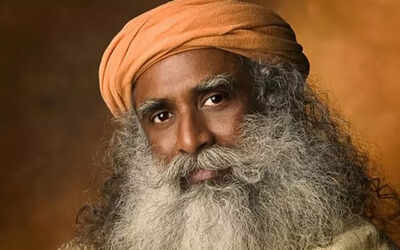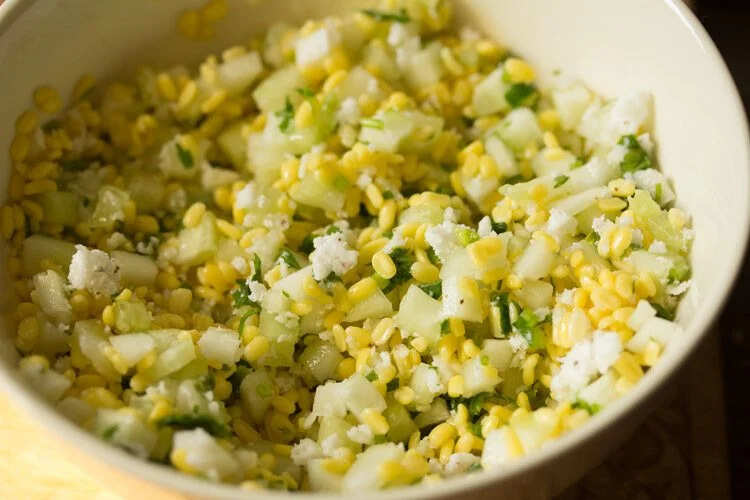ARTICLE AD BOX

It’s not often that we see Sadhguru outside his usual context of philosophy, meditation, or spirited conversations on life. But in a recent live video, viewers were treated to something disarmingly simple – the sight of him preparing and eating a salad.From what the video shows, Sadhguru looked less like a spiritual leader addressing millions and more like a man pausing to enjoy an everyday South Indian meal. That, in fact, was the charm. He laughed, stirred the salad casually, and took unhurried bites of what looked unmistakably like kosambari, a salad that has been part of South Indian kitchens for centuries. Watching him relish it was to witness food stripped back to its essence: comfort, nourishment, and pure joy.
The tradition behind the salad
https://www.facebook.com/share/r/14FxeXpJVrN/?mibextid=wwXIfr
Kosambari isn’t new. It never had to be. Served at festivals, temples, or as a quiet side at home, it embodies the South Indian instinct for balance, cooling cucumber with protein-rich moong dal, the lift of coconut, the brightness of coriander and green chilli. A quick tempering of mustard seeds and curry leaves makes it whole. For generations, this simple salad has lived in both celebration and the everyday, never asking for attention, always offering satisfaction.
In Sadhguru’s hands, it became more than a recipe. It was a reminder: the foods we take for granted are often the ones that truly sustain us.
The goodness it brings
Beyond its cultural comfort, kosambari stands firmly in the camp of health. Cucumbers are hydrating, rich in fibre, and naturally cooling – perfect for Indian summers or anyone seeking lightness in their meals. Moong dal provides lean plant protein, the kind that strengthens without weighing you down.
Coconut and curry leaves add healthy fats and antioxidants, while a squeeze of lime (if you choose) brings vitamin C.
Unlike many so-called “superfoods” that come with heavy price tags or complicated sourcing, this salad is proof that everyday ingredients, available in local markets, can be just as powerful for the body. Sadhguru enjoying it on camera seemed to underline that point — wisdom doesn’t always come from far away; sometimes it’s sitting right in your kitchen.
How to make it at home

To recreate this bowl of comfort, start with one medium cucumber, finely chopped. Mix it with two tablespoons of yellow moong dal that has been soaked for one to two hours until softened but still firm. Add a couple of tablespoons of freshly grated coconut, a finely chopped green chilli if you like a touch of spice, and a handful of coriander leaves. For the tempering, warm a teaspoon of oil — coconut or sunflower oil works beautifully and toss in half a teaspoon of mustard seeds, a dried red chilli, and a few curry leaves until they crackle and release their aroma.
Pour this fragrant tempering over the cucumber and dal, give it a gentle stir, and the kosambari is ready. It is best enjoyed fresh, when the cucumber still has its crisp bite and the dal its subtle crunch. The recipe is simple, but in its simplicity lies its brilliance.
The joy of eating mindfully
What lingered most from Sadhguru’s video wasn’t just the salad itself, but how he ate it. Each bite was slow, present, almost meditative, with a smile that seemed to say food is not merely fuel, it is an experience.
That is perhaps the biggest takeaway: eating with awareness transforms even the humblest meal. For anyone trying kosambari at home, the lesson is to not rush it. Chop the cucumber with care, soak the dal patiently, and when it all comes together, sit down and eat without distractions.
In a world where food is often hurried or overcomplicated, a bowl of cucumber salad eaten mindfully reminds us that comfort and nourishment are closer than we think. And maybe that’s why Sadhguru’s simple act resonated with so many – it wasn’t just a man eating salad, it was a celebration of presence, simplicity, and joy.



.png)
.png)
.png)
















 4 hours ago
3
4 hours ago
3









 English (US) ·
English (US) ·